Torches of Freedom
description: term encouraging women's smoking in the early 20th century United States
29 results
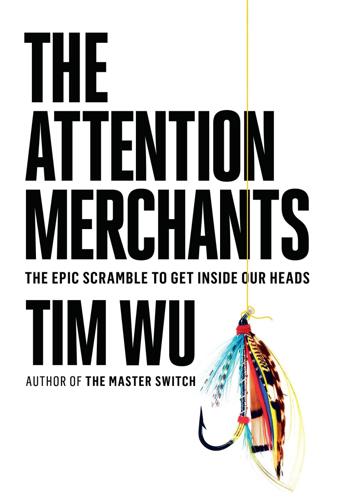
The Attention Merchants: The Epic Scramble to Get Inside Our Heads
by
Tim Wu
Published 14 May 2016
And he hired a group of attractive women to march in the 1929 New York City Easter Day Parade, brandishing their Lucky Strikes, or “torches of freedom.”10 He had paid Ruth Hale, a prominent feminist, to sign the letter inviting the women to the march. “Light another torch of freedom! Fight another sex taboo!” it thundered.11 The historical record is somewhat muddled as to the real effect of the stunt, precisely because of Bernays’s natural tendency to take credit as the mysterious puppet master behind the scenes.12 Perhaps seduced by an irresistible story, many have accepted his version of events, in which the “Torches of Freedom” parade marks a kind of social turning point. No less astute a critic of propaganda than Noam Chomsky allows that Bernays’s “major coup, the one that really propelled him into fame in the late 1920s, was getting women to smoke.”13 It is of course impossible to assign—or deny—definitive credit for something as complex as a change in social norms.
…
No less astute a critic of propaganda than Noam Chomsky allows that Bernays’s “major coup, the one that really propelled him into fame in the late 1920s, was getting women to smoke.”13 It is of course impossible to assign—or deny—definitive credit for something as complex as a change in social norms. Suffice it to say that contemporary reporting of the “Torches of Freedom” event was relatively thin. The New York Times buried its account of the protest halfway through its story on the presumably more urgent subject, the Easter Parade itself: “About a dozen young women strolled back and forth [on Fifth Avenue] while the parade was at its peak, ostentatiously smoking their cigarettes….One of the group explained that the cigarettes were ‘torches of freedom’ lighting the way to the day when women would smoke on the street as casually as men.”14 The Washington Post would not mention the demonstration until 1991, by which time the event had gathered significance by reason of the story’s propagation; in the end, Bernays’s signal triumph may have been the particularly good job he did capturing the attention of historians
…
Anyone, apparently, could be a hippie, or at least work with that desire for individuality and freedom to book billings.26 Perhaps no effort better typified the dexterity of advertising’s old guard than the campaign for Virginia Slims. Introduced in 1967 by Philip Morris as a Benson & Hedges spinoff for women, Slims were just as long but even thinner. Leo Burnett’s creative department dusted off the old 1920s saw of smoking as women’s liberation to produce a version styled for second-wave feminism. Now the “torches of freedom” were being carried by women in floral print minidresses. The jingle ironically casts this return to one of modern advertising’s lowest points as the ultimate step in the steady march of progress: You’ve come a long way, baby To get where you’ve got to today You’ve got your own cigarette now, baby You’ve come a long, long way What was the secret to how the attention industries cheated death yet again, even when the whole zeitgeist of the late 1960s and ’70s was seemingly against them?
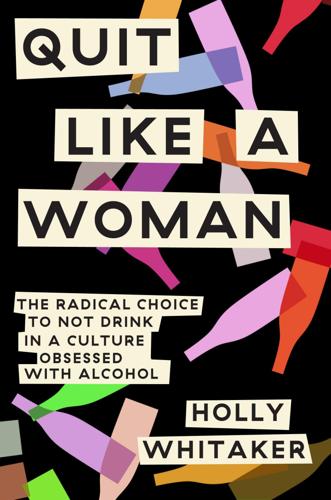
Quit Like a Woman: The Radical Choice to Not Drink in a Culture Obsessed With Alcohol
by
Holly Glenn Whitaker
Published 9 Jan 2020
Ruth Hale, feminist and founder of the Lucy Stone Foundation, was enlisted (on behalf of American Tobacco via Bernays) to place advertisements for the protest in New York papers; invitations were sent to prominent socialites (from American Tobacco via Bernays’s female secretary and Ruth Hale). The copy read: “Women! Light another Torch of Freedom! Fight another sex taboo!” The stunt didn’t just go over well—it created a media shit-storm. Images of the new liberated woman smoking a cigarette in public on Fifth Avenue during the Easter Parade sent shock waves through society—inviting women across the nation to smoke a Torch of Freedom in public as a fuck-you to the patriarchy and a nod to their increasing liberation. The Easter Protest, along with innumerable other campaigns directed to ensnare women smokers, changed the course of cigarette use among women forever.
…
Engineered consent operates on the premise that as consumers, we simultaneously want to maintain our individual preferences and gain acceptance for our choices when adopting a new set of behaviors—which explains a lot of things, like how some of us ended up wearing wedge sneakers, dressing in millennial pink, or drinking ass-tons of rosé. We think we’re making a decision based on our own preferences, when we’re actually being manipulated into that decision because of someone else’s. “Torches of Freedom” Become Glasses of Liberation In the late 1920s, the tobacco industry realized women weren’t smoking as much as men. This was due in part to the hangover of American Victorian morality (where, for instance, women were once arrested for smoking in public), and in part to Big Tobacco’s lack of focus on its lady consumer.
…
Bernays did something. After doing some research with psychoanalyst A. A. Brill, Bernays concluded that women who smoked did so to signify their rejection of feminine sensibilities and to assert their (increasing) equality with men. When Brill said, “Cigarettes, which are equated with men, become torches of freedom,” a light went off in Bernays’s head, and a PR stunt was born that would forever connect the images of women’s liberation, feminist rebellion, and smoking. It went like this: During the 1929 Easter Sunday parade in New York City, between Forty-eighth and Fifty-fourth Streets on Fifth Avenue, women would smoke (Lucky Strikes) en masse during the procession to protest inequality.
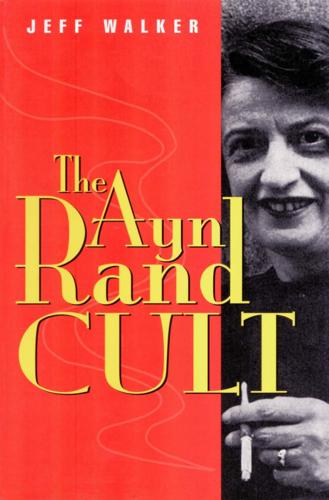
Ayn Rand Cult
by
Jeff Walker
Published 30 Dec 1998
The twentieth century saw the loosening of family bonds and the emergence of the self, rather than the family, as the basic unit of society. When Rand left Russia and arrived in America, she found a culture which has been described as a “cult of the self.” American advertisers were promoting cigarettes to women as “torches of freedom.” Numerous 1920s fads appear to have left their mark on the impressionable young immigrant from Russia: curves were being abandoned in favor of straight lines, dieting was becoming fashionable, short bobbed hair was giving women a boyish look, and a new International Style was taking hold in architecture, emphasizing those straight lines.
…
Rand became a lifelong dieter via amphetamines, never substantially changed her helmet of short hair, and bought an International Style house near Los Angeles. Even the faces of Rand’s male heroes are made up of ‘straight lines’, and “the fire in a man’s hand” is Rand’s rhapsodic updating of “torches of freedom.” The explicit defense of selfishness and individual rights along proto-Objectivist lines was also a staple of 1920s business theory. (See Chapter 10 below.) The Crumbling Foundations of Objectivist Ethics Criticizing the non-orthodox Objectivists who support David Kelley, Peikoff asks rhetorically, “If value judgments do not flow inexorably from the judgment of truth or falsehood, if the ‘ought’ does not flow inexorably from the ‘is’, where do value-judgments come from and on what are they based?
…
Page 230: “special favors sought . . .” Ryerson 1986; “vulgar selfishness” Sciabarra 1995, pp. 234–35. Page 231: “In the ideal . . .” Eksteins 1989, p. 177. Page 232: “To claim that . . .” Franck 1995; “Since he is . . .” Wolf nd. Page 233: “A little bravura . . .” Pierpont 1995; “cult of the . . .” Collier 1991, p. 64; “torches of freedom” Torrey 1992, p. 32 “fire held in . . .” Rand 1957, p. 65. Page 234: “If value judgments . . .” Peikoff 1989a. Page 235: “not ‘Man must . . .” Rand 1997, p. 276; “a sketch of . . .” Fred Miller Jr 1992; “underdeveloped and very . . .” Nathaniel Branden 1996b; “her arguments about . . .” Mack 1997; “I understand that . . .”
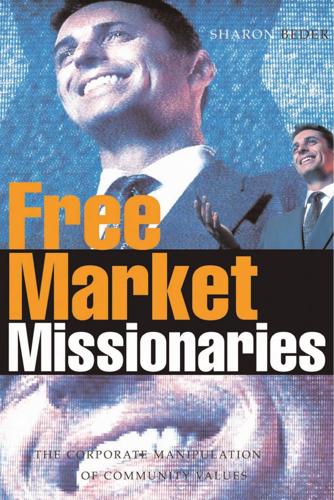
Free Market Missionaries: The Corporate Manipulation of Community Values
by
Sharon Beder
Published 30 Sep 2006
Bernays was the first to write books on public relations and apply theory to their practice, seeking to utilize psychology, sociology and other social sciences to manipulate the desires and beliefs of members of the public in ways that went far beyond mere publicity and advertising. One of his most famous public relations 4 FREE MARKET MISSIONARIES strategies was the 1929 Torches of Freedom March he organized on behalf of the American Tobacco Company. It involved women marching through New York streets smoking cigarettes, thus associating women’s rights and liberation with smoking without linking the march to his client.13 Bernays was a key proponent of the idea that ‘changing the public’s opinion – using public relations techniques – about troublesome social movements and labour unions, was far more effective than hiring goons to club people’.14 Despite a general improvement in public acceptance of large corporations, public relations expanded in the 1920s, as part of a ‘conscious policy of managing public attitudes to retain’ corporate power.
…
Ayer & Son 31 Nabisco 50 Nader, Ralph 64, 185, 198 Nadler, Richard 175, 176, 182, 183, 191 NAFTA 150 National Alliance of Businessmen 65 National Association of Manufacturers (NAM) 1935 Convention 30 1970s campaigns 75 anti-socialist message 38 campaign spending 26 community program outreach 18, 19 and Coors 109 decentralized approach 18–19 discredited 30 economic education programmes 46, 47, 49–50, 53 employee education 55–56 free market message 20–3 funding for associations 47 and pensions 172 post-war campaigns 35–36 pre-war political campaign 4–5, 13, 14–26 reactions to campaign 19–20 techniques 15–18 National Association of Secondary School Principals 52, 53 National Better Business Bureau 52 National Center for Employee-Ownership (NCEO) 179 National Center for Policy Analysis 176 National Council on Economic Education (NCEE) 203, 209–210, 214–219, 220 see also Joint Council on Economic Education (JCEE); education, standards in economics National Economic Council 48, 54 National Education Association 47, 52 National Education Business Partnership Network 214 National Education Program 54, 71 National Electric Light Association (NELA) 194 National Farmers Federation 132, 133, 137 see also McLachlan, Ian National Federation of Building Trades Employers 113 National Federation of Enterprise Agencies 214 National Federation of Independent Business 65 National Foundation for Consumer Credit 54 National Foundation for Teaching Entrepreneurship 209, 212 National Industrial Conference Board 45 National Restaurant Association 172 National Science Teachers Association 52 National Tax Limitation Committee 118 nationalism 21, 25 nationalization 94 Nelson, Brendan 180 neo-classical economics 6–9, 94–95, 105, 159, 220 neo-liberalism 93–105 see also economics, economic rationalism; ideology, free market Nestlé 73, 211 New Deal 14, 15, 24, 117, 222 New Right 127, 130–131, 159, 160 New York Stock Exchange 53, 195 New York Times 45 New Zealand civil service 163 deregulation 152–155, 156, 163–165 economic advisers 152–156 economic literacy 218 New Right 130 privatizations 132, 138 social justice 153, 154, 163–164 258 FREE MARKET MISSIONARIES think tanks 129, 131, 132, 134, 135, 138 Treasury 152–156 US influence 154 Washington consensus 149 New Zealand Association of Economists 155 New Zealand Business Roundtable 104, 132, 133, 135, 155, 156 News Corporation 201 newspapers, campaigns 5, 15–17, 18, 26, 34–35, 68, 70, 71, 87, 110, 117, 120 Nimmanahaeminda, Tarrin 148 Niskanen, William 118 Nixon, Richard 64, 97, 99 Noble, Edward 109 Non-Accelerating Inflation Rate of Unemployment (NAIRU) 99 North Limited 135 OECD 152, 154, 156, 159 Olin Foundation 73, 110, 119, 171, 209 opinion leaders 36 opinion polls/surveys 30–32, 56, 57, 66, 68, 86, 215–218 see also Opinion Research Corporation (ORC) Opinion Research Corporation (ORC) 31, 35, 39–41, 45, 52, 55, 57–58 Ortiz, Guillermo 148 Packard, David 72 parent–teacher associations 36 patriotism 5, 14, 16, 21, 22, 25, 26, 33, 36 pensions, privatization 171–173, 181–184 see also social security People’s Bicentennial Commission 66 Pepsico 73 Perle, Richard 121 Pfizer 119, 222 Philip Morris 69, 119, 222 Phillips Petroleum 70, 73 Pinochet, Augusto 97, 145–146 planning 96, 103 Poleconomy 87 policy institutes see think tanks political freedom, and free market 8, 21, 38, 41, 42, 48, 50, 67, 88, 95, 131, 145 pollsters’ role 30–32 Porter, Michael 132, 133, 134, 137 Powell, Lewis 63–64, 72, 73, 109 Pratt, Dick 133 Prebble, Richard 153 PricewaterhouseCoopers 210, 212 privatizations Adam Smith Institute 113 Australia 132, 138, 183–184, 196 Chicago School 96 France 196–197 Germany 196 New Zealand 132, 138 public choice theory 105 social security 171–173, 181–186 UK utilities 102, 195–196 Washington Consensus 148 Procter & Gamble 15, 33, 38, 65, 110, 119, 209, 211, 222 Productivity Promotion Council of Australia 82 Profit Sharing Council of America 180 Progress for America 172 Progress Party 128 Project Victoria 134–135, 156 propaganda, etymology of 3 Proshare 178, 202 Protestantism 231 Psychological Corporation 25, 31 Public Affairs Council 79 Public Choice Society 103 public choice theory 103–105, 111, 128, 223 Public Media Center 66 public speeches 16, 35, 36, 39, 71 see also speakers Quaker Oats Company 53 radio programmes see broadcasting Rainbow Warrior 153 Rand, Ayn 127 Read, Leonard 45, 46, 93 Reader’s Digest 45, 47, 49, 88 Reagan, Ronald 71, 97, 99–100, 101, 102, 103, 109, 110, 115–118, 121, 147, 149, 171, 182 regulation freedom from 5, 7, 8, 36, 37, 41, 83, 105, 149 See also free market, economic freedom opposition to 14, 21, 23-25, 38, 41, 46, 74, 86, 95, 98, 100, 102, 103, 110, 115, 116, 151, 176 see also government Reith, Peter 180–181 religion economics as religion 230–231 free market scriptures 6–9 missionary zeal 87 Protestantism and capitalism 231 Republic Steel 26, 33, 38, 58 Richardson, Ruth 132, 153 Rio Tinto 212 Roach, Ian 130 Robinson, Claude 45 Rochester University 96, 154 Roosevelt, Franklin 13, 14, 18 Roosevelt, Theodore 3 Rotary Clubs 36, 88 Roux, Michael 161 Royal Bank of Canada 220 Rumsfeld, Donald 171 Ryerson Inc. 70 Saint-Gobain 196–197 Santos 129, 130 Scaife, Richard Mellon 110 Scaife Foundations 73, 119, 171, 212, 223 Scanlan, Phil 135 school teachers 26, 36, 40, 41, 47, 49, 50, 51, 52, INDEX 259 69, 70, 72–74, 80–81, 82, 84, 85, 86, 87, 202–203, 209–210, 212, 222, 223–224 schools see education Schwab, Klaus 185 Sears/ Sears Roebuck 50, 57, 70 Securities Industry Foundation for Economic Education (SIFEE) 203–204 share ownership annual general meetings 197 Australia 174, 180–181, 201–202 children 194–195 classes of shares 199, 201 decision-making power 197–202 election of boards 197–198 employee share ownership 177–181 holdings within shareholdings 201 institutional investors 198–199 ‘public’ ownership 193–197 school education 202–204 shareholder democracy 8, 191–204 and social justice 192 statistics 199–202 Stock Market Game 203–204 United Kingdom 177, 178–179, 199, 200 US statistics 182–183, 201 wider ownership 173–177, 184–186 Shared Capitalism Institute 184–185 Shatner, William 70 Shell 73, 119, 127, 129, 133, 212, 222 Shell Australia 130, 135 Shell Canada 224 Shell Live Wire 214 Sherman, Alfred 113 Shultz, George 99 Simon, William 73 Singleton, John 127–128 Small Business Service 213, 231 Smith, Adam 6–7, 95 Smith Richardson Foundation 73, 110, 119 social justice Australia 165, 192 and free market 151–152, 153 New Zealand 153, 154, 163–164 and shareholder democracy 192 United Kingdom 149 social security 41, 96, 98 see also pensions, privatization socialism 38, 41, 47, 48, 49, 57, 71, 84 socially responsible corporate behaviour 174 Society for the Development of Austrian Economics 128 Society for Individual Liberty 128 South Korea 218 Southern California Edison 45 Soviet Union 59, 96 Spain 138 speakers 16, 18, 19, 26, 47, 50, 54, 63, 72, 80, 82, 85, 87, 88, 129 see also public speeches Standard Oil 3, 15, 31, 50, 51, 69 standards, economics courses 218–221, 222, 223 Stanford University 147, 148 Stanolind Oil and Gas Company 56–57 State Electricity Commission of Victoria 138 Stock Market Game 203–204 Stone, John 132, 133, 134, 137, 161 structural adjustments 146, 148–152 Students in Free Enterprise (SIFE) 222 Sturgess, Gary 159–160, 161 Suncor 224 supply-side economics 100–102, 110 Sydney Institute 135–136, 204 Sydney Stock Exchange 82 Tasman Economics see Tasman Institute Tasman Institute 133–135, 138 taxation Australia 88, 128, 131, 132, 158, 164 free market ideology 95, 96, 118 IMF 147 New Zealand 153 public opinion 88, 175, 176 opposition to 14, 21, 23, 24, 35, 53, 82 Reagan era 116 shareholdings 174, 178, 179, 195, 196 social security 171, 172 supply-side economics 100, 101–102 United Kingdom 149, 178, 179 Washington Consensus 148, 149 technopols 149 see also economic advisers Telecom NZ 213 television see broadcasting Telstra (Australia) 196, 204 ‘Ten Pillars of Economic Wisdom’ 47–48 Tenneco 73 Test of Economic Literacy (TEL) 216–217, 218 Texas Bureau for Econmic Understanding 71, 72 Texas Corporation 15 Texas University 73 Thailand 138, 148 Thatcher, Margaret 97, 99, 111–114, 116, 149, 196 think tanks Australia 84, 127–138 dissemination of free market ideology 110–122 funding 109, 110–111, 119 influence mechanisms 119–122 influence on economics teaching 223 and Mont-Pèlerin Society 94 New Zealand 129, 131, 132, 134, 135, 138 United Kingdom 111–115 United States 115–122 Third Millennium 184 Thomas, Jean-Pierre 185–186 ‘thought leaders’ 36 TNT Express 211 tobacco, and women 4 Torches of Freedom March 1929 4 trade unions and Advertising Council campaign 33–34 Australia 87, 88, 133 banning 109 260 FREE MARKET MISSIONARIES and economics education campaigns 53 and NAM campaigns 4 and people’s capitalism 177 post-war business propaganda 23–6 United Kingdom 98, 149–150 Trades Union Congress 179 Trotter, Ron 156 Truman, Harry 26, 38, 48 Tullock, Gordon 103 Turbull, Shann 180 UCLA 96 Uncle Abner 15, 17, 21 unemployment 16, 46, 68, 113, 97–100, 145, 150, 151, 153, 164, 174, 231 Unilever 209, 212 United Kingdom children and enterprise 209, 210, 211–212, 213–214 civil service 89, 163 economic education 79–81, 211, 213–4, employee share ownership 177, 178–179 inflation policies 98 Labour Party 48, 114 privatizations 102, 113, 138, 195–196 public view of business ethics 231 share ownership 195–196, 198–200 Thatcher economics 99, 149 think tanks 111–115 Washington consensus 154 welfare state 48, 150 universities 1970s free market education 72–74 Australian economics courses 89 centres of private enterprise 221–222 economics 96, 147–148 influence 154, 159 and Mont-Pèlerin Society 94 University of Canberra 160 University of Chicago 58, 94, 96, 99, 147 see also Chicago School University of Miami 74 University of Southern California 73 University of Virginia 96 Uranium Information Centre 224 US Chamber of Commerce 25, 26, 35, 36, 46, 47, 53, 63–64, 72, 75, 86, 117 US Civil Aeronautics Board 102 US Industrial Council (USIC) 70–71 US Steel 18, 22, 31, 50, 51, 54, 193 USIC Educational Foundation 71 utility companies 5, 138, 194, 195–196 see also electricity companies Vanderbilt, Cornelius 2 Victorian Employers’ Chamber of Commerce and Industry 135 Victorian Employers Federation 134 Victorian Farmers Federation 134 Victorian Gas and Fuel Corporation 138 Vodafone 212 Voice of America 80 Volker, William 94 W.
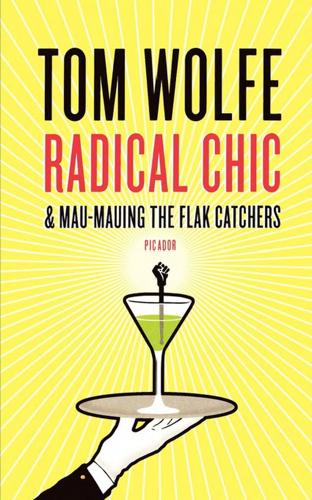
Radical Chic & Mau-Mauing the Flak Catchers
by
Tom Wolfe
Published 1 Jan 1970
Sixty strong, sixty loud, sixty wild, they come swinging into the great plush gold-and-marble lobby of the San Francisco City Hall with their hot dogs, tacos, Whammies, Frostees, Fudgsicles, french fries, Eskimo Pies, Awful-Awfuls, Sugar-Daddies, Sugar-Mommies, Sugar-Babies,, chocolate-covered frozen bananas, malted milks, Yoo-Hoos, berry pies, bubble gums, cotton candy, Space Food sticks, Frescas, Baskin-Robbins boysenberry-cheesecake ice-cream cones, Milky Ways, M&Ms, Tootsie Pops, Slurpees, Drumsticks, jelly dougnuts, taffy apples, buttered Karamel Korn, rootbeer floats, Hi-C punches, large Cokes, 7-Ups, Three Musketeer bars, frozen Kook-Aids--with the Dashiki Chief in the vanguard. In no time at all the man's dashiki is practically flapping in the breeze from the hurricane of little bodies swirling around, roaring about with their creaming wavy gravy food and drink held up in the air like the torches of freedom, pitching and rolling at the most perilous angles, a billow of root-beer float here ... a Yoo-Hoo typhoon there ... The kids have discovered the glories of the City Hall lobby. Such echoes! Their voices ricochet off the marble in the most groovy way. Screams work best, screams and great hollow shrieks ... and the most high-toned clatter of sixty pairs of little feet running at top speed ...

The Great Mental Models: General Thinking Concepts
by
Shane Parrish
Published 22 Nov 2019
It wasn’t just about selling the cigarette, it was reorganizing society to make cigarettes an inescapable part of the American woman’s daily experience. Bernays’s efforts to make smoking in public socially acceptable had equally startling results. He linked cigarette smoking with women’s emancipation. To smoke was to be free. Cigarettes were marketed as “torches of freedom.” He orchestrated public events, including an infamous parade on Easter Sunday in 1929 which featured women smoking as they walked in the parade. He left no detail unattended, so public perception of smoking was changed almost overnight. He both normalized it and made it desirable in one swoop.
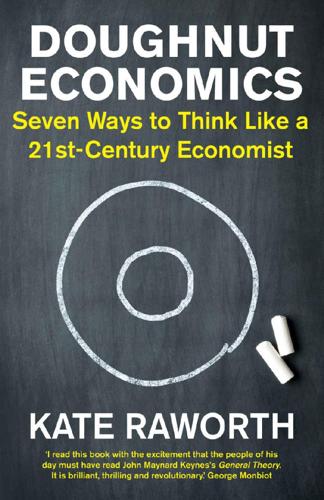
Doughnut Economics: Seven Ways to Think Like a 21st-Century Economist
by
Kate Raworth
Published 22 Mar 2017
‘We are governed, our minds are molded, our tastes formed, our ideas suggested, largely by men we have never heard of,’ he wrote in his book Propaganda, ‘… It is they who pull the wires which control the public mind.’27 Bernays invented the ‘public relations’ industry and rapidly became America’s master wire-puller, convincing women (on behalf of the American Tobacco Corporation) that cigarettes were their ‘torches of freedom’, while persuading the nation (on behalf of the Beech-Nut Packing Company’s pork department) that bacon and eggs were the ‘hearty’ all-American breakfast.28 Drawing on his uncle’s insights into the workings of the human mind, Bernays knew that the secret to influencing preferences lay not in advertising a product’s attributes (it’s bigger, faster, shinier!)
…
Henrich, J. et al. (2001) ‘In search of Homo Economicus: behavioral experiments in 15 small-scale societies’, Economics and Social Behavior, 91: 2, pp. 73–78. 27. Bernays, E. (2005) Propaganda, New York: Ig Publishing, pp. 37–38. 28. Edward L. Bernays video interview on the Beech-Nut Packing Co., available at https://www.youtube.com/watch?v=6vFz_FgGvJI, and on ‘Torches of Freedom’, available at: https://www.youtube.com/watch?v=6pyyP2chM8k 29. Ryan, R. and Deci, E. (1999) ‘Intrinsic and extrinsic motivations: classic definitions and new directions’, Contemporary Educational Psychology 25, pp. 54–67. 30. Schwartz, S. (1994) ‘Are there universal aspects in the structure and content of human values?’

When They Go Low, We Go High: Speeches That Shape the World – and Why We Need Them
by
Philip Collins
Published 4 Oct 2017
On this day our first thoughts go to the architect of this freedom, the father of our nation, who, embodying the old spirit of India, held aloft the torch of freedom and lighted up the darkness that surrounded us. We have often been unworthy followers of his and have strayed from his message, but not only we but succeeding generations will remember this message and bear the imprint in their hearts of this great son of India, magnificent in his faith and strength and courage and humility. We shall never allow that torch of freedom to be blown out, however high the wind or stormy the tempest. This is Nehru’s acknowledgment of his split with Gandhi, which was both stylistic and intellectual.

Survival of the Richest: Escape Fantasies of the Tech Billionaires
by
Douglas Rushkoff
Published 7 Sep 2022
On one end of the new discipline’s spectrum was Bernays’s uncle Sigmund Freud, who offered insights into personality, primal emotions, and the subconscious. Psychoanalysis meant there was a “self” within oneself, to which a propagandist or marketer could speak directly through symbols and imagery. Bernays used such methods for his infamous “torch of freedom” campaign, for which he hired models to march in New York’s Easter Sunday Parade while smoking. This was meant to break the social taboo against women smoking in public by associating cigarettes with liberating women’s repressed oral fixation and sexual desire. On the other end were the behavioral scientists, like Harvard’s B.

McMindfulness: How Mindfulness Became the New Capitalist Spirituality
by
Ronald Purser
Published 8 Jul 2019
In 1928, Bernays published Propaganda, which argued for “the engineering of consent,” by providing the means to “control and regiment the masses according to our will without their knowing about it.”5 He made his name by persuading women to take up smoking, rebranding cigarettes as feminist “Torches of Freedom.” Saving his best shot for last, Fernandez was eager to tell one more story. “When I was still working at Google,” he said, dropping one of the names that made him rich, “I wrote a letter to my teacher.” Up flashed a slide of Thich Nhat Hanh. There were sounds of impressed recognition in the audience.

Stories Are Weapons: Psychological Warfare and the American Mind
by
Annalee Newitz
Published 3 Jun 2024
So Bernays decided to create a campaign that could sublimate women’s love of freedom into a lust for cigarettes. All he needed was the perfect mass media vehicle—one that fed women’s dreams. He worked his connections and got in touch with Vogue magazine. Somehow he convinced the fashion magazine to give him a list of New York’s hottest debutantes so that he could invite them to a “Torches of Freedom” demonstration. He pitched it as an event where the city’s wealthiest young women would light up cigarettes at the annual Easter Day Parade, flaunting their liberation. It was the perfect spectacle for the photo-hungry media, and the campaign was a roaring success. Women whose emotions were roused by thoughts of “freedom”—and by the sight of so many female influencers—started buying cigarettes and smoking them openly.
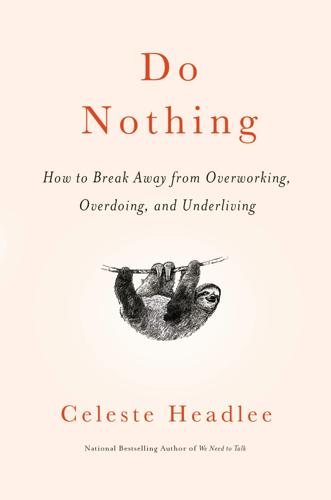
Do Nothing: How to Break Away From Overworking, Overdoing, and Underliving
by
Celeste Headlee
Published 10 Mar 2020
This slight man with his dark, sunken eyes, high forehead, and generous mustache is probably not familiar to most people today, but he changed our lives irrevocably. Bernays is now known as the “Father of Spin.” He helped make it fashionable for women to smoke in the late twenties by rebranding cigarettes as “Torches of Freedom” and symbols of feminist strength. His 1928 book, Propaganda, was hugely influential and put into practice by many men in power. “Those who manipulate this unseen mechanism of society constitute an invisible government which is the true ruling power of our country,” Bernays wrote. “In almost every act of our daily lives, whether in the sphere of politics or business, in our social conduct or our ethical thinking, we are dominated by the relatively small number of persons…who understand the mental processes and social patterns of the masses.”

Frommer's Irreverent Guide to San Francisco
by
Matthew Richard Poole
Published 17 Mar 2006
The city’s more modern role as a catalyst for social change and the avantgarde began in the 1950s when a group of young writers and philosophers—including Allen Ginsberg and Jack Kerouac— challenged the materialism and conformity of American society 2 by embracing anarchy and Eastern philosophy, expressing their notions in poetry. They adopted a uniform of jeans, sweaters, sandals, and berets, called themselves “Beats,” and hung out in North Beach bars such as Vesuvio, Caffe Trieste, Tosca, and Enrico’s Sidewalk Cafe (all of which are still in business). In the 1960s the torch of freedom passed from the Beats and North Beach to the hippies and Haight-Ashbury, but it was a radically different torch. The hippies replaced the Beats’ angst, jazz, and poetry with love, communalism, rock music, and a back-to-nature philosophy. Timothy Leary (and many others) experimented with LSD and exhorted youth to “turn on, tune in, and drop out.”
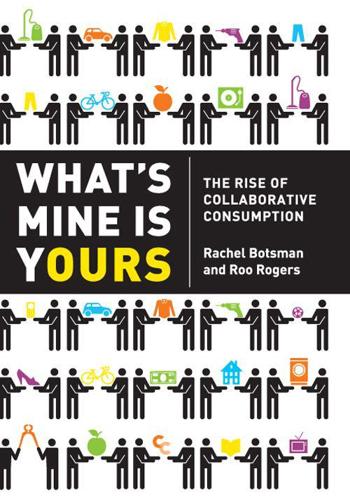
What's Mine Is Yours: How Collaborative Consumption Is Changing the Way We Live
by
Rachel Botsman
and
Roo Rogers
Published 2 Jan 2010
During the 1929 New York Easter Parade, he arranged for a group of attractive young debutantes, including his own secretary, Bertha Hunt, to march in their Sunday best. On Bernays’s signal, the women all lit up a Lucky Strike cigarette. Hunt’s press release described the march as “Lighting the Torches of Freedom” in the interests of gender equality. And being the master of PR, Bernays saw to it that media throughout the world covered the event. The idea was that anyone against the idea of women smoking would appear to be against their liberty and freedom. Although this did not completely do away with the taboo against women’s smoking, the number of women taking up smoking skyrocketed (American Tobacco’s revenues jumped by $32 million in 1928 alone).6 In his memoirs, Bernays wrote, “It was on this day I learned that age-old customs could be broken down by a dramatic appeal, disseminated by the network of media.”7 When you consider that the average person sees more than three thousand advertising messages per day, it is not surprising that we have become so seduced by the pull of the new and the desire for more.8 Influencers like Bernays were part of a wider force, which engineered and reinforced a system that converted consumers’ wants into needs into everyday habits.
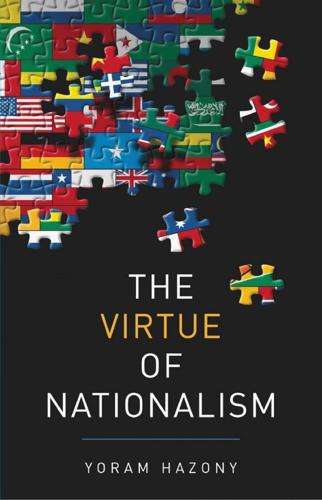
The Virtue of Nationalism
by
Yoram Hazony
Published 3 Sep 2018
In taking up arms in the name of their own national state and their own self-determination, the Jews, as many Europeans and others now see it, have simply taken up the same evil that led Germany to build the camps. The details may differ, but the principle, in their eyes, is the same: Israel is Auschwitz. Try to see this through European eyes. Imagine being a proud Dutchman today, whose nation held high the torch of freedom in that hopeless uprising against Catholic Spain, a war of independence that lasted eighty years. “Yet I am willing to give this up,” he says to himself, “to sacrifice this heritage with its dreams of past glory, and to say good-bye to the state founded by my forefathers, for the sake of something higher.

How to Be Idle
by
Tom Hodgkinson
Published 1 Jan 2004
The girl, whose name I remember as Monica, gave me a De Reszke Turkish cigarette from a small packet, and there we two young girls viciously sat, with our pot of tea and our toasted scones, smoking, and in public . . . ' This craving for independence was also exploited in the 1 920s by the manufacturers of Lucky Strike, who cleverly branded their cigarettes as ' torches of freedom ' in a successful effort to attract female smokers. The idea was repeated in the emancipated 1 960s by Virginia Slims, with their ' You 've Come a Long Way, Baby' tagline. Doubtless the Bohemian ladies of leisure enjoyed the aura of devilmay-care loucheness that smoking conferred on them. And back in the nineteenth century, Baudelaire had observed in his ' Les Salons de 1 848 ' the same attitude in prostitutes of the Paris bordellos: 'Prostrate they display themselves in desperate attitudes of boredom, in bar room indolence, with masculine cynicism, smoking cigarettes to kill time with the resignation of oriental fatalism. ' Smoking is shocking, stinky, useless, harmful to the health; no wonder its use is opposed by those unfortunates, epitomized by New York's Mayor Bloomberg, who feel weighed down by a sense of civic responsibility (my New York friend Tom says that there are so many people smoking in the street that you have to go inside for a breath of fresh air) .
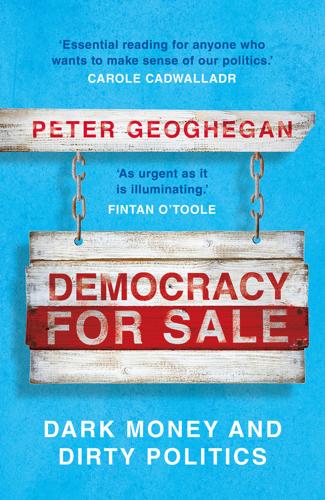
Democracy for Sale: Dark Money and Dirty Politics
by
Peter Geoghegan
Published 2 Jan 2020
Digital campaigning allows politicians to scale up and refine something they have done for decades – advertise to voters. The modern ‘dark arts’ of political advertising can be traced back to the work of Edward Bernays in the United States a century ago. A marketing genius, Bernays had previously applied his uncle Sigmund Freud’s psychological insights to business.14 He rebranded cigarettes as “torches of freedom” to promote female smoking, and popularised the morning fry-up, citing a spurious survey of 5,000 doctors that allegedly found bacon and eggs were healthier for breakfast than the traditional tea and toast. In a 1928 essay, ‘Putting Politics on the Market’, Bernays encouraged political strategists to imitate the golden rule of business – know your market.

War Without Mercy: PACIFIC WAR
by
John Dower
Published 11 Apr 1986
He proceeded to collect millions of feet of enemy film, to cut and edit this until the expressions of the Axis powers became lean anti-Axis images, and to juxtapose the menacing faces and words of the enemy against the bright hope and accomplishments of the American people and their allies. To be inspired with the will to win, Capra told his associates as they embarked on this work, Americans needed to be shown that they were fighting for the existence of their country, and at the same time were carrying the “torch of freedom” for a better postwar world–a world in which conquest, exploitation, and economic evils had been eliminated, and peace and democracy prevailed. This seemed a clear line, and a familiar one to anyone who recalled the idealistic Allied propaganda of World War One. A team of seven Hollywood writers was asked to prepare rough scenarios for a sequence of films conveying this message.

The Cigarette: A Political History
by
Sarah Milov
Published 1 Oct 2019
Quote from William Anderson (Tobacco Growers Information Committee), “Tobacco Industry Fear Being Taxed to Death,” Richmond News Leader, February 24, 1969. 114. D. T. Frederickson, “Action on Smoking and Health,” January 26, 1968, R. J. Reynolds Records, UCSF Library, https://www.industrydocumentslibrary.ucsf.edu/tobacco/docs/mfkx0096. 115. Amanda Amos and Margaretha Haglund, “From Social Taboo to ‘Torch of Freedom’: The Marketing of Cigarettes to Women,” Tobacco Control 9 (2009): 3–8; Edward L. Bernays, Biography of an Idea: Memoirs of Public Relations Counsel Edward L. Bernays (New York: Simon and Schuster, 1965), 382–395. 116. “Smoking, the Destruction of Self,” New England Journal of Medicine 279, No. 5 (August 1, 1968): 267–268. 117.

The Climate Book: The Facts and the Solutions
by
Greta Thunberg
Published 14 Feb 2023
Fascinatingly, Bernays – who invented the ‘public relations’ industry – was the nephew of Sigmund Freud, and he realized that the ideas underlying psychotherapy could be turned into very lucrative retail therapy if he could connect people’s deepest desires to the latest products on sale. In the 1920s he convinced women (on behalf of the American Tobacco Corporation) that cigarettes were their ‘torches of freedom’, while persuading the nation (on behalf of the Beech-Nut Packing Company’s pork department) that bacon and eggs were the ‘hearty’ all-American breakfast. He certainly knew the power of this advertising. ‘We are governed, our minds are molded, our tastes formed, our ideas suggested, largely by men we have never heard of,’ he wrote.
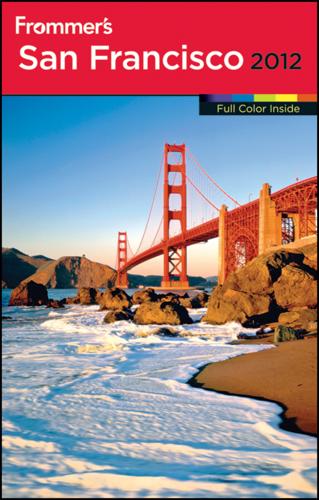
Frommer's San Francisco 2012
by
Matthew Poole
,
Erika Lenkert
and
Kristin Luna
Published 4 Oct 2011
When the tour buses started rolling in, rents went up, and Broadway turned into strip club row in the early 1960s. Thus ended an era, and the Beats moved on. The alternative scene shifted to Berkeley and the Haight. Police arrest Lenny Bruce after deeming performance “obscene” at the Jazz Workshop in North Beach. The 1960s: The Haight The torch of freedom had been passed from the Beats and North Beach to Haight-Ashbury and the hippies, but it was a radically different torch. The hippies replaced the Beats’ angst, anarchy, negativism, nihilism, alcohol, and poetry with love, communalism, openness, drugs, rock music, and a back-to-nature philosophy.
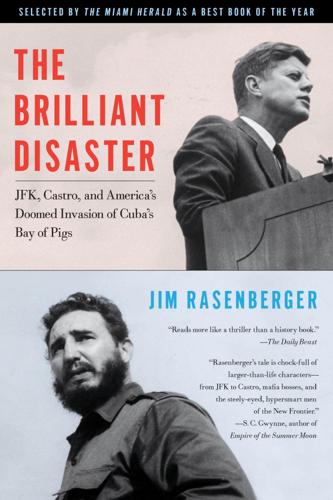
The Brilliant Disaster: JFK, Castro, and America's Doomed Invasion of Cuba's Bay of Pigs
by
Jim Rasenberger
Published 4 Apr 2011
He was sixty-six years old, serving under a president soon entering his last year in the White House, and the building would not be habitable for many months to come. But Dulles would be here in name: Allen Welsh Dulles. There it was, engraved in the cornerstone that he and the president had come this morning to lay. As we lay this stone conscious that others have put the torch of freedom and of human dignity in our hands, we pray for a new resolve now that the precious gains of Christian civilization are threatened by sinister forces without pity or conscience … If not Allen Dulles’s crowning achievement, this building would be at least a suitable palace for the empire he had built under President Eisenhower.

The Stack: On Software and Sovereignty
by
Benjamin H. Bratton
Published 19 Feb 2016
When it was done buying those companies, it would still have $59 billion in cash to spend on anything else it wants. See http://www.businessinsider.com/mind-blowing-facts-about-apple-2014-4?op=1#ixzz30L3YYeDJ. 57. In this famous TV advertisement aired only once—during the 1984 Super Bowl—a young rebel representing Apple hurls “a torch of freedom” into the screens on which the face of “IBM” drones on. The promise is that with Apple's new colorful day, 1984 (the year) will not be like 1984, the Orwellian dystopia. If the reader is unfamiliar with the advertisement, its Wikipedia page will explain its significance: http://en.wikipedia.org/wiki/1984_%28advertisement%29. 58.

The Radical Fund: How a Band of Visionaries and a Million Dollars Upended America
by
John Fabian Witt
Published 14 Oct 2025
When hairnet manufacturers looked to increase their sales, Bernays organized an effort to make long hair fashionable. Later in the 1920s, Bernays would launch his most famous campaign when he engineered an effort on behalf of the American Tobacco Company to encourage women to smoke cigarettes. Hundreds of fashionably dressed young women marched down Fifth Avenue smoking “Torches of Freedom” quietly paid for by American Tobacco. Bernays refused to let his own wife smoke, citing what he thought were obvious health risks. But when American Tobacco’s green packaging on its Lucky Strikes brand proved off-putting to female consumers, Bernays crafted a campaign to make green the stylish color of the moment.

Strategy: A History
by
Lawrence Freedman
Published 31 Oct 2013
His more famous campaigns were encouraging “bacon and eggs” for breakfast by getting leading physicians to endorse the need for a “hearty” breakfast, having famous figures from vaudeville meet with President Calvin Coolidge in an attempt to boost his image, and—notably—an imaginative stunt for the American Tobacco Company. He persuaded ten debutantes to light up with their cigarettes during the 1929 Easter Parade, thereby notionally striking a blow for feminism by undermining the taboo against women smoking in public. The cigarettes became “torches of freedom.”42 Bernays invited obvious criticisms: usurping the role of democracy by taking upon himself to shape peoples’ thoughts, encouraging mass effects rather than individual responsibility, and relying on cliché and emotional attitudes rather than intellectual challenge. Bernays argued that in an age of mass media, the techniques were unavoidable and propaganda was ubiquitous.

Ashes to Ashes: America's Hundred-Year Cigarette War, the Public Health, and the Unabashed Triumph of Philip Morris
by
Richard Kluger
Published 1 Jan 1996
Brill, who counseled Hill that cigarettes were symbols of freedom for women as well as “a sublimation of oral eroticism; holding a cigarette in the mouth excites the oral zone,” as Bernays recounted this flash of profundity. Thus, Brill concluded, “Cigarettes, which are equated with men, become torches of freedom.” This last phrase sounded so uplifting that Bernays, with Hill’s blessing, organized a “freedom march” led by ten debutantes and some prominent feminists who strode up six blocks of Fifth Avenue while smoking extravagantly as part of the Easter Sunday parade of finery. The stunt won enough publicity for Hill to seek analyst Brill’s renewed counsel a few years later for a billboard campaign to show women smoking.
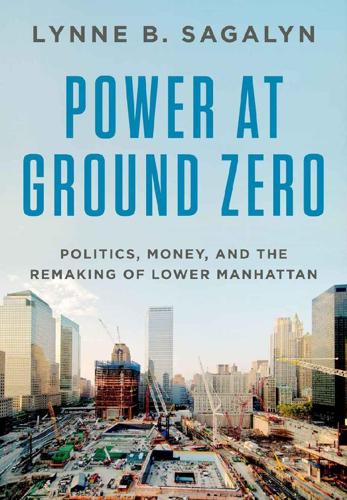
Power at Ground Zero: Politics, Money, and the Remaking of Lower Manhattan
by
Lynne B. Sagalyn
Published 8 Sep 2016
“The Freedom Tower will be a proud new symbol of our country’s strength—and a monument to our two lost icons.” What the rhetoric promised, the architectural model put on view: a “unique geometrical torque of the building’s tower” creating an asymmetrical form with a soaring offset 1,776-foot spire designed to “echo the profile of the Statue of Liberty’s arm holding the Torch of Freedom.”47 Symbolism infused the iconic tower’s tribute to the American creed of freedom in every dimension: in name, height, size, and location—at the northwest corner of the site to complete the spiraling composition of the master plan’s towers. The model’s formal unveiling at Federal Hall, the classical building where the first U.S.
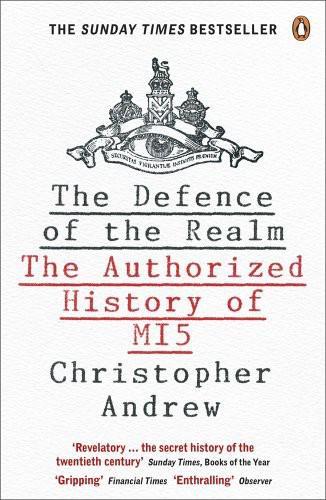
The Defence of the Realm
by
Christopher Andrew
Published 2 Aug 2010
Kell was obliged to tell chief constables in 1925 that MI5 was’only concerned with Communism as it affects the Armed Forces of the Crown’. ‘Civil’ subversion was Thomson’s responsibility.5 MI5’s New Year card for 1920 showed the attractive figure of ‘Liberty and Security’ in diaphanous gown, holding aloft the torch of freedom and standing on a pedestal erected by the heroic efforts of British fighting and working men (stage right). But ‘Liberty and Security’ is menaced by an assortment of subversives (stage left): a defeated Hun in pumpernickel helmet (by now a reminder of past dangers rather than a present menace), the rebel Irish (a much smaller threat on the mainland than in Ireland) and Bolshevik revolutionaries.

Parks Directory of the United States
by
Darren L. Smith
and
Kay Gill
Published 1 Jan 2004
Ferries are operated by Circle Line-Statue of Liberty Ferry, Inc. from Battery Park in New York City and Liberty State Park in Jersey City, New Jersey. Facilities: Rest rooms (u), restaurant/snacks, visitor center (u), museum/exhibit, self-guided tour/trail. Activities: Guided tours. Special Features: The famous 152-foot copper statue bearing the torch of freedom was a gift of the French people in 1886 to commemorate the alliance of the two nations in the American Revolution. Designed by Frederick Bartholdi, the statue came to symbolize freedom for immigrants. Nearby Ellis Island, through which nearly 12 million immigrants passed (1892-1954), was reopened to the public in 1990 as the country’s only museum devoted entirely to immigration